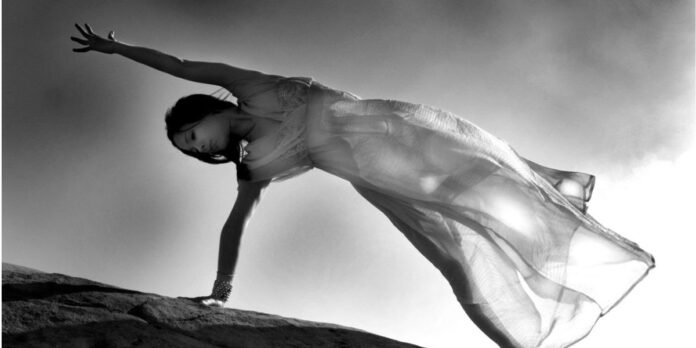How did the sacred pursuit of health morph into a neon-lit obstacle course of endless striving?
At this point, chasing wellness feels less like a lifestyle choice and more like an extreme sport.
You sprint through aisles lined with smoothie powders, mindfulness apps, vegan collagen shots, and artisanal yoga mats, hoping your shopping cart hums at the perfect frequency of self-optimization. Because if it doesn’t — are you even in the game?
Everywhere you turn, there’s a new potion, a new practice, a new path to personal enlightenment.
And yet — somehow — we’re all still knotted with tension, stretched thin, and existentially exhausted.
Wellness has become an industrial complex — selling salvation one turmeric latte at a time.
The Rise of the “Better You” Economy
The principal drivers behind the current wellness movement are, predominantly, young people.
Generations such as Gen Z and Millennials — who have also championed climate activism and revived the aesthetic of simpler, pastoral lifestyles — are now propelling the wellness industry forward with remarkable fervour.
Platforms like TikTok re-packaged and reimagined morning walks as rituals of empowerment, meticulously documented gut health routines, and infrared saunas ingeniously fitted into modest living spaces.
The overarching message is unmistakable resonating with all to be stronger, calmer, healthier, and more resilient — and achieve it without delay.

The origins of this heightened focus on wellness are not difficult to trace. It arises, in part, from legitimate concerns: escalating anxiety rates, deteriorating healthcare infrastructures, and the lasting psychological impact of a pandemic that brought human mortality into stark focus across every digital platform. A 2022 CDC survey found that over 42% of young adults report experiencing symptoms of anxiety or depression.
Social media has quietly reframed wellness from a personal journey into a public performance. It’s no longer enough to be healthy; you must look healthy, prove resilience, and broadcast your pursuit of betterment — or risk being seen as left behind.
Strength, beauty, power — packaged and pixelated. No wonder we’re reaching for our wallets faster than we reach for actual water.
The Silent Risks Lurking Under the Wellness Glow
Reality is becoming increasingly uncomfortable. Much of the wellness marketplace operates within a regulatory grey zone —where standards blur and assurances are often superficial. Labels claiming “organic” status are, at times, little more than trendy slogans rather than verified certifications.
Marketing Wellness: Power, Strength, Glow
Brands quickly recognized this growing desire — and responded with remarkable speed and intensity. Today’s wellness marketing doesn’t whisper relaxation; it shouts transformation.
- Buy this adaptogen blend, and you’ll power through meetings like a Silicon Valley monk.
- Apply this serum, and you’ll glow harder than the sun.
- Stretch on this mat, and you’ll realign your chakras and your social life.
The truth remains that authentic wellness — the truly organic, artisanal kind — is inherently slow, costly, and dependent on skilled craftsmanship. Mass-market wellness, by contrast, often prioritizes convenience and aesthetics over integrity: cutting corners, obscuring ingredients behind technical jargon, and depending heavily on consumer trust, or more often, consumer ignorance. The irony is profound. In seeking to feel more whole, many are inadvertently purchasing what is, in fact, hollow.

Case Study on Hidden Saboteurs
Take, for instance, something as seemingly benign as a yoga mat. In the quiet ritual of unrolling it, there is a promise: a return to breath, to body, to a rare moment of inner peace.
Yet for many, that moment unfolds atop a surface manufactured from synthetic rubber or PVC — materials that, rather ironically, may disrupt natural magnetic fields and release chemical off-gassing into the very space intended for healing.
Natural alternatives do exist. Mats crafted from cork, jute, or cotton — materials that honour the body’s connection to the Earth — offer a more authentic path. However, they often come at a premium, are marketed with less vigour, and seldom fit the pastel, curated aesthetic that dominates social media feeds.
As a result, it is the synthetic, the mass-produced, and the visually appealing that flood the marketplace, and by extension, our choices.
And the yoga mat is merely a symbol. The broader landscape of wellness is equally fraught. Cheaper oils marketed as artisanal blends, heavily processed powders dressed up as superfoods, synthetic beauty “elixirs” promising radiant transformations — all flood the shelves under the banner of well-being.
The irony is unmistakable: the very marketplace promising health and balance has, in many cases, become a field of hidden hazards — a minefield where the pursuit of wellness can easily veer into a silent accumulation of new stressors.

Buying Wellness ≠ Becoming Well
Marketing trends today are acutely aware of the psychological sleight of hand at play — the subtle understanding that consumers are not merely buying products, but aspirations, identities, and the comforting illusion of progress.
Thus when purchasing wellness products often feels like self-affirmation — a protein bar, a calming tea, a collagen powder — each framed as a deliberate investment in a better self. Small purchases can feel like big victories.
Yet the effect, like the energy from a cleverly marketed adaptogen blend, is often fleeting.
The calming tea tastes more of marketing than of magic. The protein bar delivers its promise in sugar rather than strength. And before long, the old familiar restlessness returns — only now, it is cloaked in yoga pants and carrying a reusable water bottle.
Across every platform and screen, we are daily inundated with the same insistent message: we are only one product away from being fitter, calmer, shinier, more complete.
Each advertisement does not merely offer a product; it offers a subtle judgment — a reminder of what we are not yet, but might become if only we bought more.
The pursuit of wellness, so often framed as a path to peace, has become yet another arena of invisible competition — and exhaustion.
The Quiet Rebellion: Real Wellness, Less Hype
True wellness has always been rooted in what is often overlooked: the restorative power of uninterrupted sleep, anchoring both mind and body; the nourishment of real, unprocessed food that honours the body’s natural needs rather than the latest trends; the steady rhythm of physical movement pursued not as punishment but as an affirmation of vitality; the conscious act of breathing, deliberate and unhurried, drawing the mind back from distraction to presence; the sustaining strength of meaningful relationships, built quietly over time; and the immersion into a craft or passion pursued not for display but for the intrinsic joy it brings, where time itself seems to dissolve.
Such practices are unlikely to capture the transient attention of digital platforms. They are too modest, too enduring, to be packaged into fleeting trends or visual spectacles. Yet it is precisely in their simplicity that their power lies. Perhaps true achievement is not reflected in a curated shelf of supplements, but in the silent triumph of eight uninterrupted hours of restful sleep.
Perhaps genuine wellness is not something to be acquired or advertised, but something to be cultivated — slowly, imperfectly, and often away from public view. In a world that rewards the constant performance of betterment, choosing to live quietly and well may, in itself, be the most radical act of all.
Each advertisement does not merely offer a product; it offers a subtle judgment — a reminder of what we are not yet, but might become if only we bought more.






